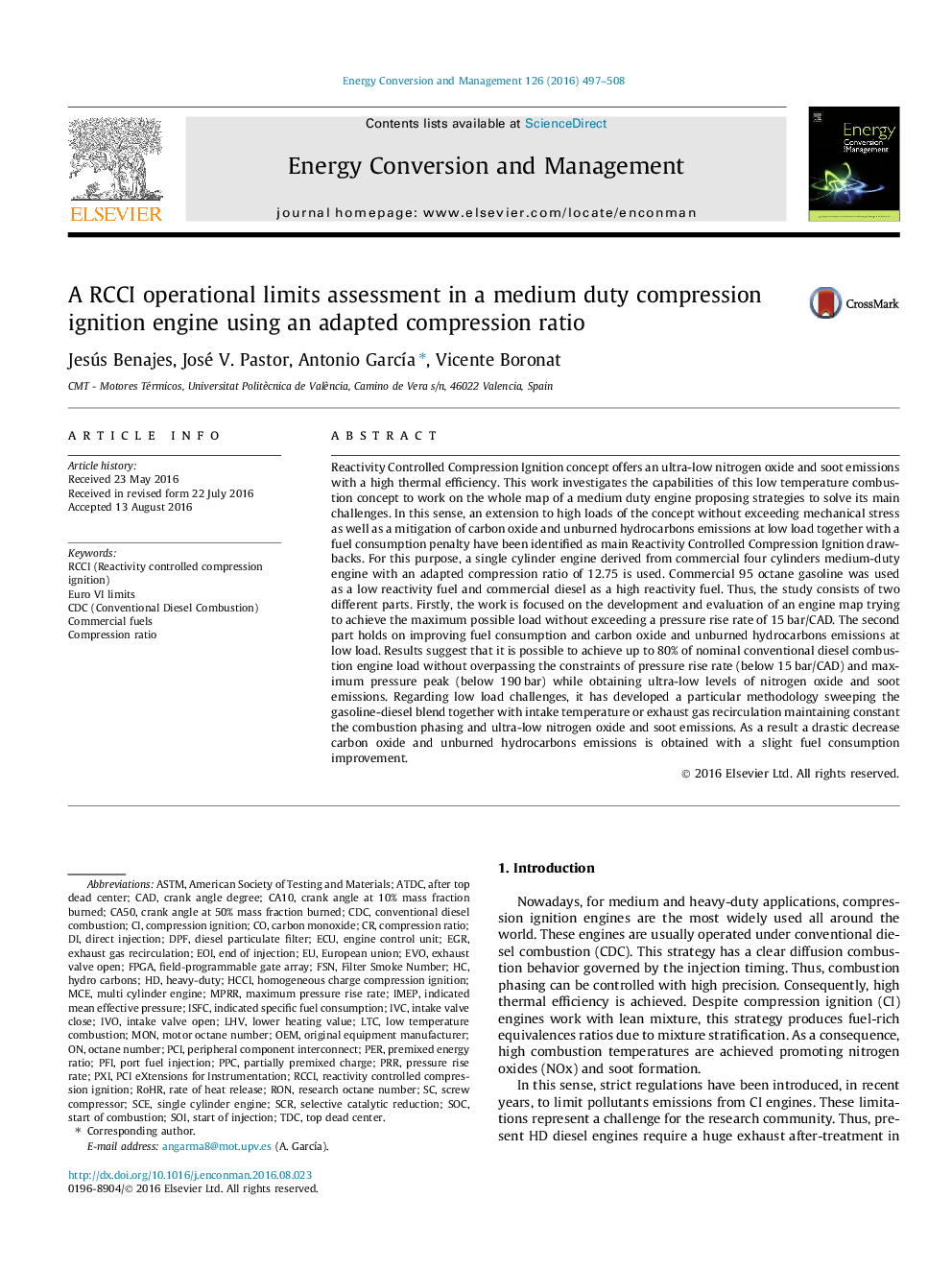| Article ID | Journal | Published Year | Pages | File Type |
|---|---|---|---|---|
| 7160060 | Energy Conversion and Management | 2016 | 12 Pages |
Abstract
Reactivity Controlled Compression Ignition concept offers an ultra-low nitrogen oxide and soot emissions with a high thermal efficiency. This work investigates the capabilities of this low temperature combustion concept to work on the whole map of a medium duty engine proposing strategies to solve its main challenges. In this sense, an extension to high loads of the concept without exceeding mechanical stress as well as a mitigation of carbon oxide and unburned hydrocarbons emissions at low load together with a fuel consumption penalty have been identified as main Reactivity Controlled Compression Ignition drawbacks. For this purpose, a single cylinder engine derived from commercial four cylinders medium-duty engine with an adapted compression ratio of 12.75 is used. Commercial 95 octane gasoline was used as a low reactivity fuel and commercial diesel as a high reactivity fuel. Thus, the study consists of two different parts. Firstly, the work is focused on the development and evaluation of an engine map trying to achieve the maximum possible load without exceeding a pressure rise rate of 15Â bar/CAD. The second part holds on improving fuel consumption and carbon oxide and unburned hydrocarbons emissions at low load. Results suggest that it is possible to achieve up to 80% of nominal conventional diesel combustion engine load without overpassing the constraints of pressure rise rate (below 15Â bar/CAD) and maximum pressure peak (below 190Â bar) while obtaining ultra-low levels of nitrogen oxide and soot emissions. Regarding low load challenges, it has developed a particular methodology sweeping the gasoline-diesel blend together with intake temperature or exhaust gas recirculation maintaining constant the combustion phasing and ultra-low nitrogen oxide and soot emissions. As a result a drastic decrease carbon oxide and unburned hydrocarbons emissions is obtained with a slight fuel consumption improvement.
Keywords
EOILHVPFIASTMRCCILTCECUCA50IMEPSCESOIPPCMPRRDPFCDCISFCHCCIFSNTDCPRRPCIIVCMCEaTDCEGRPXIIVOCA10partially premixed chargeReactivity controlled compression ignitionField-programmable gate arrayEuropean UnionLow temperature combustionConventional diesel combustioncompression ignitionlower heating valueAmerican Society of Testing and MaterialsEvoResearch Octane Numberafter top dead centerport fuel injectiondirect injectionOctane numberMaximum Pressure Rise Ratepercrank angle degreeexhaust valve openintake valve openRONRoHRcrank angle at 50% mass fraction burnedoriginal equipment manufacturerHomogeneous Charge Compression IgnitionSOCStart of combustionStart of injectionmotor octane numberFilter Smoke Numberintake valve closeCADDiesel particulate filterFPGAtop dead centerIndicated Specific Fuel Consumptioncarbon monoxideSingle cylinder engineMONPressure rise rateRate of heat releaseCompression ratioIndicated mean effective pressureOEMEngine control unitHeavy-dutyEnd Of Injectionscrew compressorSelective catalytic reductionexhaust gas recirculationSCR
Related Topics
Physical Sciences and Engineering
Energy
Energy (General)
Authors
Jesús Benajes, José V. Pastor, Antonio GarcÃa, Vicente Boronat,
